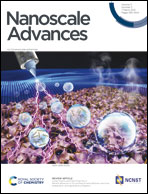Recent advances in 3D printing of nanocellulose: structure, preparation, and application prospects
Abstract
Emerging cellulose nanomaterials extracted from agricultural biomasses have recently received extensive attention due to diminishing fossil resources. To further reduce the carbon footprints and wastage of valuable resources, additive manufacturing techniques of new nanocellulosic materials have been developed. Studies on the preparation and characterization of 3D-printable functional nanocellulosic materials have facilitated a deeper understanding into their desirable attributes such as high surface area, biocompatibility, and ease of functionalization. In this critical review, we compare and highlight the different methods of extracting nanocellulose from biorenewable resources and the strategies for transforming the obtained nanocellulose into nanocomposites with high 3D printability. Optimistic technical applications of 3D-printed nanocellulose in biomedical, electronics, and environmental fields are finally described and evaluated for future perspectives.

- This article is part of the themed collection: Recent Review Articles


 Please wait while we load your content...
Please wait while we load your content...